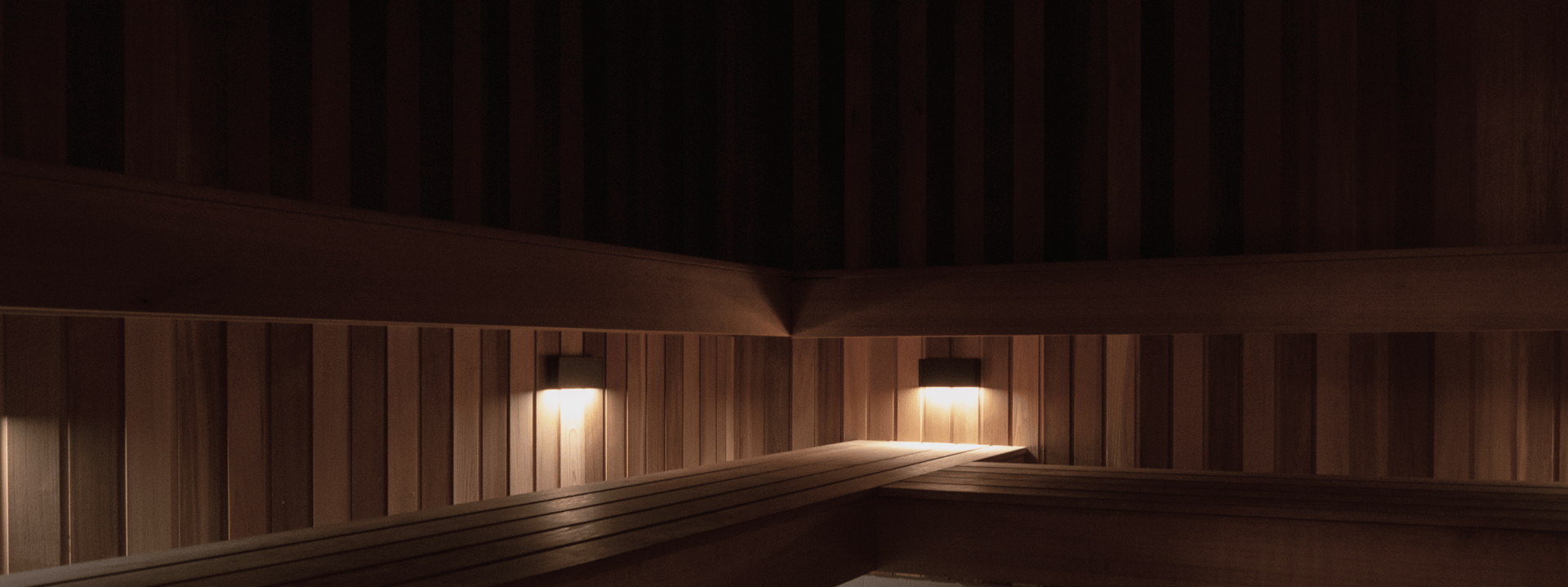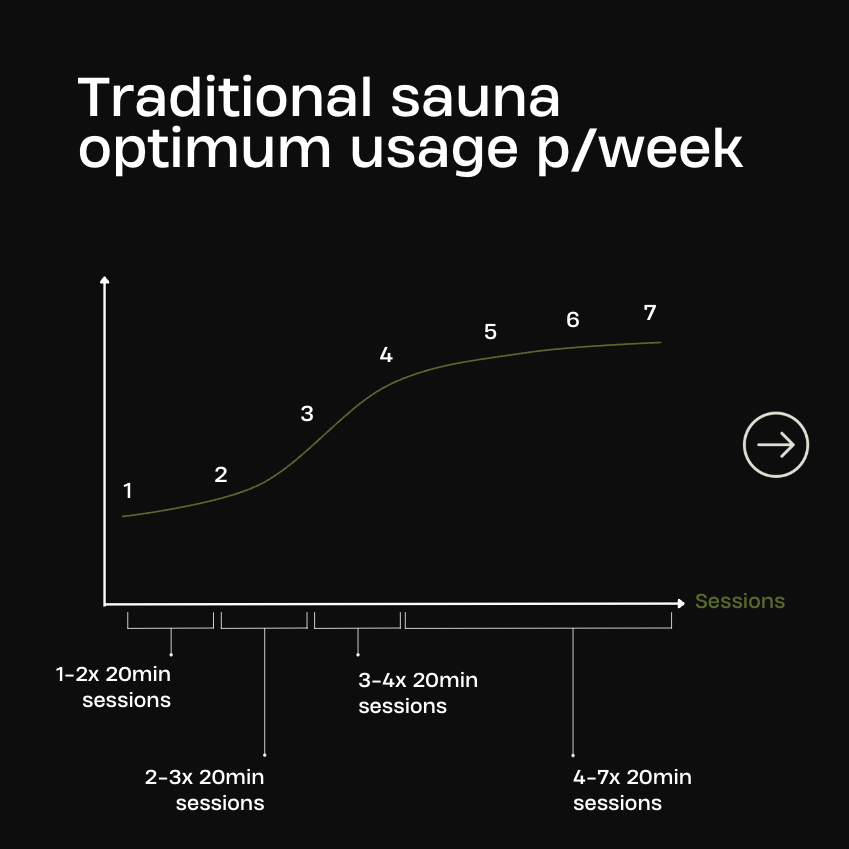A long-term study of 2,300 middle-aged men conducted by the University of Eastern Finland revealed the following benefits:

Research suggests that saunas can enhance the production of human growth hormone (HGH), crucial for muscle and tissue repair.
Saunas possess the ability to alleviate delayed onset muscle soreness (DOMS) and tension, thereby expediting the recovery process after a workout and better preparing athletes for subsequent workouts.
The heated environment encourages the release of anti-inflammatory compounds, leading to diminished pain and increased flexibility.
As per a study, sauna therapy exhibited a reduction in markers of oxidative stress, a potential contributor to inflammation. Regular therapy sessions over time could yield life-improving benefits, positively impacting overall well-being.
Heat therapy induces the release of endorphins, providing relief from pain and muscle soreness, while fostering relaxation and enhancing sleep quality.
A sauna session can have a notable impact on sleep patterns.
By increasing your core temperature in the sauna or steam room just before bedtime and then stepping out to allow rapid cooling, your body experiences a temperature drop that prepares you for a deep and restful sleep. The combination of warmth and solitude also contributes to relaxation and unwinding.
The elevated temperatures in high-quality saunas (around 80 degrees) are thought to contribute to enhanced cardiovascular well-being. In a sauna, the heart rate may increase up to 100 beats per minute during moderate temperatures and up to 150 beats per minute during hotter sessions, resembling the increases observed during moderate exercise.
In a study involving 19 healthy adults, the effects of a single 25-minute sauna session were found to be comparable to those of moderate physical exercise in terms of cardiovascular measures. Similar to the benefits of exercise, regular sauna use typically leads to improved blood pressure, endothelial function, and left ventricular function, while also reducing inflammation.
Regular use of saunas and steam rooms can yield a remarkable effect on the skin and its overall appearance. The interplay of steam, elevated temperature, sweating, and enhanced circulation stimulates collagen reproduction, offering substantial benefits for the regeneration of skin cells while deeply cleansing and revitalizing your skin.
Steam rooms provide profound stress relief through various avenues. The warmth, seclusion, and elevated temperature collectively induce muscle relaxation, improve circulation, and stimulate the release of endorphins.
Refresh
Nordic
Sauna and steam therapy involve brief passive exposure to intense heat, resulting in mild hyperthermia—a rise in the body’s core temperature that triggers a thermoregulatory response, restoring balance and preparing the body for future heat stress.
Exposure to intense heat triggers a swift response in your body:
Beyond these visible signs of heat stress, deeper, invisible responses occur, primarily through the phenomenon of hormesis. Hormesis is a protective response triggered by mild stressors that often produce responses disproportionate to the stress’s magnitude. This leads to various protective responses, long-term adaptations, cellular repair, and protection against more severe stressors.
A long-term study of 2,300 middle-aged men conducted by the University of Eastern Finland revealed the following benefits:
These cardiovascular benefits are attributed to decreased blood pressure and increased blood vessel diameter resulting from heat exposure.
The study also showed that frequent sauna use reduced the risk of dementia and Alzheimer’s disease in a dose-dependent manner. Men using saunas four to seven times per week had a 66% lower risk of dementia and a 65% lower risk of Alzheimer’s disease compared to those using saunas once a week.
Using saunas leads to significant fluid loss through sweating, so maintaining hydration is vital. If you are new to saunas, take regular breaks for fresh air. Start on a lower bench in the sauna, progressing to higher benches as you become accustomed to the heat.
However, certain health conditions may make sauna use risky. If you have asthma, heart disease, epilepsy, or are pregnant, consult a doctor before using a steam room or attempting sauna therapy at a spa.
If you find sauna therapy intriguing, consider booking a session at TH7. We offer a wide range of treatments tailored to your needs, providing a relaxing experience.

We use the most up to date research to match protocols with health outcomes.
Engine
1437 Logan Road
21 longland street
91 Noosa Drive, Noosa, Qld
196 Montague Rd, West End, Qld
26 Queens Way
We cannot serve you if are: Pregnant, under the age of 16, or seriously ill. If you fit these categories please do not book. Before using our facilities you will be required to sign our liability waiver
We cannot serve you if are: Pregnant, under the age of 16, or seriously ill. Before using our facilities you will be required to sign our liability waiver.